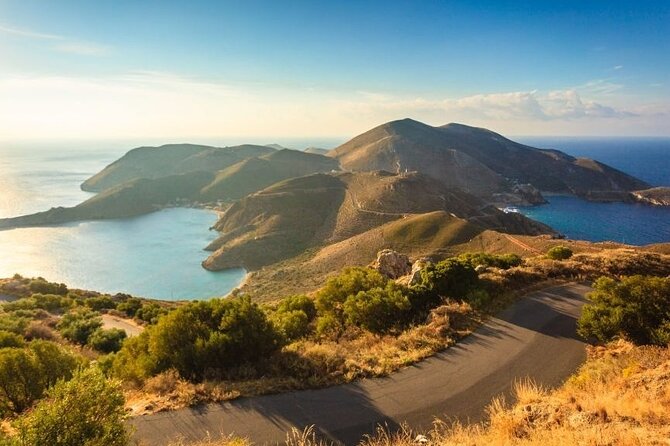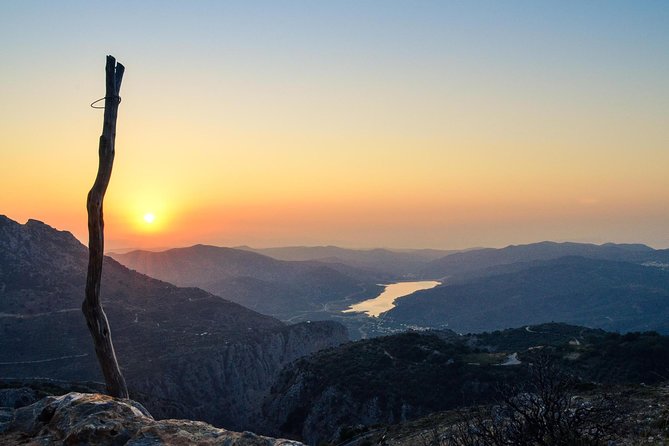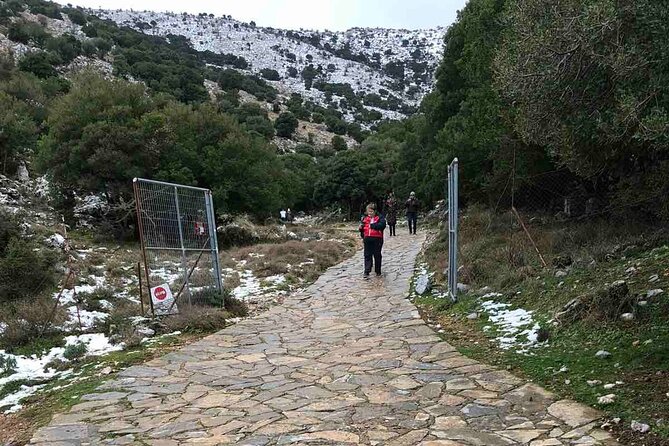Lassithi Plateau
Nestled in the serene embrace of Crete, the Lassithi Plateau offers a tranquil escape for those seeking a taste of authenticity in their travels. With its verdant landscapes and ancient allure, this plateau holds secrets waiting to be uncovered.
As visitors traverse its winding paths and encounter its hidden gems, they are met with a sense of wonder and curiosity about the tales that lie within its borders. Join the journey to explore the mysteries and beauty of Lassithi Plateau, where every step unveils a new chapter in its compelling narrative.
Key Points

- Lassithi Plateau boasts a rich historical significance dating back to Minoan times.
- The plateau blends traditional and modern agricultural practices for sustainability and productivity.
- Diverse flora and fauna, including unique plant species and wildlife, thrive in the area.
- Visitors can engage in various activities like hiking, exploring caves, and immersing in cultural heritage.
Location and Geography
Nestled in the eastern part of the island of Crete, the Lassithi Plateau captivates visitors with its picturesque landscape and unique geography. Its location at an altitude of approximately 850 meters above sea level offers a striking contrast to the surrounding mountains.
Surrounded by the Dikti mountain range, the plateau extends over approximately 25 square kilometers, providing a fertile oasis in the rugged terrain. The topography of the plateau is characterized by its flat expanse, dotted with thousands of traditional windmills that once served as an innovative irrigation system.
This geographical feature contributes to the plateau’s reputation as a haven for agriculture, particularly known for its thriving olive groves and fruit orchards.
Historical Significance

Amidst the ancient ruins and remnants of bygone civilizations, the Lassithi Plateau reveals its profound historical significance through layers of time-worn artifacts and archaeological treasures.
This expansive plateau in Crete holds a rich cultural heritage that dates back centuries, offering a glimpse into the region’s past. The plateau has been a site of human activity since Minoan times, with evidence of settlements, religious practices, and agricultural advancements.
Over the years, various civilizations, including the Romans, Byzantines, and Ottomans, have left their mark on this land, influencing its development and shaping its historical narrative.
Exploring the historical significance of the Lassithi Plateau provides a unique opportunity to connect with the diverse cultural tapestry that defines this enchanting region.
Agricultural Practices

How do agricultural practices on the Lassithi Plateau reflect the region’s historical legacy and cultural traditions? The agricultural practices on the Lassithi Plateau blend traditional methods with modern techniques, showcasing a harmonious coexistence of past and present. Farmers in the region still utilize age-old practices such as manual plowing and harvesting, passed down through generations, demonstrating a deep respect for tradition. At the same time, advancements in irrigation systems and agricultural machinery have been integrated to enhance efficiency and productivity. This fusion of traditional and modern approaches not only preserves cultural heritage but also ensures sustainability and competitiveness in today’s agricultural landscape.
| Traditional Methods | Modern Techniques |
|---|---|
| Manual Plowing | Irrigation Systems |
| Harvesting by hand | Agricultural Machinery |
Flora and Fauna
The historical agricultural practices on the Lassithi Plateau have nurtured a rich ecosystem, teeming with diverse flora and fauna that thrive in this unique environment. The plateau is home to a variety of plant species, including wild orchids, Cretan ebony, and Cretan maple trees. These plants provide vital habitats for the local wildlife, such as the endangered Bearded Vulture, the Kri-Kri (Cretan wild goat), and the Milos Viper.
Efforts in wildlife conservation on the plateau aim to protect these species and their habitats, ensuring the continued biodiversity of the region. Visitors can witness these remarkable creatures in their natural surroundings, contributing to the preservation of the delicate balance between flora and fauna on the Lassithi Plateau.
Popular Activities
Visitors to the Lassithi Plateau can engage in a variety of popular activities that showcase the natural beauty and cultural heritage of the region. Exploration options abound for travelers looking to enjoy the wonders of the plateau. From hiking trails that meander through lush landscapes to visiting ancient windmills, there is something for every adventurer. Tourist attractions like the Dikteon Cave, birthplace of Zeus according to Greek mythology, and the Psychro Cave are must-see destinations that offer a glimpse into the rich history of the area. To help you plan your visit, here is a table highlighting some of the popular activities available in the Lassithi Plateau:
| Activity | Description |
|---|---|
| Hiking | Explore scenic trails and enjoy nature. |
| Visit Windmills | Discover traditional windmills and their history. |
| Dikteon Cave | Explore the legendary birthplace of Zeus. |
| Psychro Cave | Visit this historical cave with cultural significance. |
Common questions
What Is the Best Way to Get to Lassithi Plateau From Heraklion?
For travelers looking to reach Lassithi Plateau from Heraklion, public transportation and car rental services are available options. Both choices offer scenic routes that showcase the local cuisine and provide a memorable journey.
Are There Any Local Festivals or Events Held at Lassithi Plateau Throughout the Year?
Throughout the year, local festivals and events celebrate the region’s culture and heritage. Visitors can indulge in delicious local cuisine while enjoying the vibrant sounds of traditional music, offering a unique and immersive experience.
Are There Any Restrictions or Regulations for Visitors Exploring the Plateau?
When exploring new places, visitors should always be mindful of their behavior and the potential environmental impact. Respecting local customs, wildlife, and ecosystems is crucial for sustainable tourism and preserving the beauty of destinations.
What Are Some Lesser-Known Hiking Trails or Viewpoints to Explore at Lassithi Plateau?
To discover lesser-known hiking trails and viewpoints, visitors can explore hidden caves offering a sense of mystery and panoramic views that captivate the soul. These hidden gems provide a unique and unforgettable experience.
Is There a Recommended Time of Day to Visit Lassithi Plateau for the Best Experience?
For the best experience, the recommended time of day to visit a location often depends on the activity or view desired. Sunset views can enhance the beauty of many destinations, offering stunning photo opportunities and a peaceful atmosphere.
Last Words

Experience the timeless beauty and rich history of Lassithi Plateau, where traditional windmills stand tall amidst fertile plains and ancient caves whisper tales of the past.
Explore the lush landscapes, learn about the local culture, and savor the enchanting allure of this idyllic destination in the heart of Crete.
Whether you seek adventure, relaxation, or culture, Lassithi Plateau offers a truly unforgettable experience for travelers seeking to discover the soul of Crete.